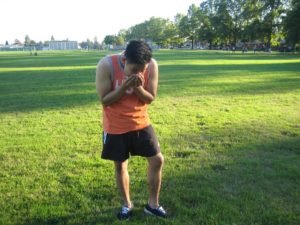Not all individuals are allergic or highly sensitive to animal dander, but those who are can experience symptoms that range from mild to severe. It is vital to avoid exposure to animals since this is the most effective way to prevent an allergic reaction from occurring. The symptoms of an allergic reaction to animal dander are strikingly similar to other airborne allergies such as hay fever.
What are the symptoms?
The mild reactions to animal dander include itchy, watery or red eyes, sneezing episodes, tickling sensation in the back of the throat or roof of the mouth or itchy nose. The significant allergic reactions include nasal congestion, runny nose, drainage of thick mucus down the back of the throat, sinus pain and pressure, cough, bluish discoloration under the eyes and frequent waking. Remember that it is not unusual for the symptoms to start as mild and eventually become severe if the individual is constantly exposed to animal dander.
Aside from the respiratory symptoms, an allergic reaction to the skin called as allergic dermatitis can occur. Oftentimes, the rash can be described as hives or elevated, reddish patches of skin along with itchiness.
Close look on animal dander

Animal dander is not actually harmful to the human body. When an allergic reaction occurs, the immune system of the body reacts to dander as a threat. The immune system transmits messages to various parts of the body to generate histamine to fight off the dander. The histamine is the chemical responsible for triggering the symptoms of an allergic reaction.
Potential sources
Animal dander is present in animal skin cells, urine and saliva. Both dogs and cats can shed hair and skin cells wherever they go. The allergic reactions can be triggered by these animals and less commonly in other animals such as horses.
Licking is a usual practice among animals when they are cleaning themselves. The saliva from the tongue can leave behind animal dander on the fur that was shed. Many animals also lick as a sign of affection that can also trigger an allergic reaction particularly allergic dermatitis.
Management
Always bear in mind that vacuuming can often minimize animal dander, but it is not likely to completely eliminate the allergen in the house. Remember that it usually takes several weeks for the allergens to eventually die out.
Most individuals who are allergic must decide to live without any pets or use an antihistamine on a daily basis. These antihistamines work by blocking the generation of histamine that was triggered by the animal dander.
Once histamine is blocked, the annoying symptoms can be drastically reduced. Those who only have a topical allergy can cleanse the saliva off right away and apply an antihistamine cream. Other commonly used treatment options include corticosteroids to fight off the inflammation while decongestants are used to minimize the sinus congestion. In addition, saline solution is used for nasal irrigation.
What are the potential complications?
Those who have both asthma and allergy to animal dander face a higher risk for an asthma attack upon exposure to dander. Exposure to the dander can cause chest discomfort or pain, difficulty breathing, wheezing and other noises during exhalation as well as waking due to shortness of breath or coughing.
